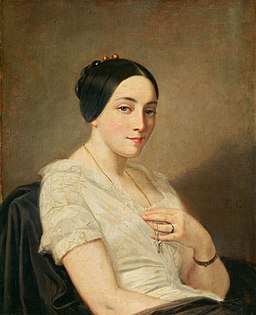These are:
Bammann, Hans
Rademacher, Dr Bernard
Wuester, Adolf
Adrion, Philippe
Birtschansky, Zacharie
Cailleux, Paul
Duthey, Jean Paul Louis
Klein
Kuehne & Nagel
Landry, Pierre
Levy, Mlle
Petrides, O
Rosner, Isador (or Ignacy)
Thierry
de Trevise, Duc
von Frey, Count Alexander
Wendland, Dr Hans
How to analyse this network?
It is interesting to note that while the ALIU entries for the above names contain mentions of Rochlitz, the entry for Gustav Rochlitz in the ALIU Red Flag list does not, for practical reasons, mention any of his "many contacts". They are simply too many to fit in the limited space available in the ALIU Red Flag List. Rather the ALIU entry attempts to summarize Rochlitz' main roles and "most intimate" connections.
Rochlitz's own ALIU Red Flag entry reads:
Rochlitz, Gustav: Art dealer, active in France prior to and during World War II in the interests of the Third Reich Chief participant in exchanges of paintings confiscated by the ERR, and important recipient of loot. Personal belongings and dealer’s stock stated to be at Todtmoos/Baden (in French Zone of Occupation), in the house of Edward Schupp Possibly removed by Lt Loos of the French Army to Loerach-Schopfheim Apart from Rochlitz’s many contacts in Paris, his two most intimate friends were E Ascher (rue Jacques Callot, corner rue de Seine) and M de Beurry (42 rue Ernest Cresson) formerly of the Paris police Rochlitz has been indicated by the French Government (Seine Tribunal, Judge Frapier) and is presently confined at Fresne Prison, Paris
The Rochlitz entry contains words such as "art dealer", "France", "World War II", "Third Reich", "paintings", "ERR", "loot", Todtmoos/Baden", "French zone of Occupation", "Edward Schupp", "French army" "Loerach-Schopfheim", "Paris", E Ascher", "rue Jacques Callot", "rue de Seine", "M de Beurry", "42 rue Ernest Cresson", "Paris police", "indicated" (a misspelling or mistranscription of "indicted"), "French government", "Seine Tribunal", "Judge Frapier", "Fresne Prison".
Many of these entities appear in other ALIU Red Flag entries and could, in their turn, serve to explore connected networks.
Would this be useful?
For example, if one filters ALIU Red Flag entries for "dealer", 213 names appear. Most have locations that can be mapped. Here is Europe:
What happens if we cross the Rochlitz direct link information with, for example, the dealer information?
Well, frankly, the chart gets harder to read. Part of Rochlitz' network disappears into the magma of the 213 dealers, and we have a less clear picture of what is going on.
The occupation "art dealer" seems like an important attribute but not in this analysis where it produces more noise than insight.
What if, on the contrary, we join Rochlitz' network with the networks of one of his direct links, say Wuester?
Bammann, Hans
Rademacher, Dr Bernard
Wuester, Adolf
Adrion, Philippe
Birtschansky, Zacharie
Cailleux, Paul
Duthey, Jean Paul Louis
Klein
Kuehne & Nagel
Landry, Pierre
Levy, Mlle
Petrides, O
Rosner, Isador (or Ignacy)
Thierry
de Trevise, Duc
von Frey, Count Alexand
Perhaps we can see which of Rochlitz' direct links also had direct links to, say, Wuester?
The chart below shows Wuester's direct connections in the ALIU Red Flag list.
 |
| Adolf Wüster had a lot of direct links, including Gustav Rochlitz. |
Some of Wuester's direct links are also direct links for Rochlitz. For example: Paul Cailleux.
 |
| Art dealer Paul Cailleux, 136 rue du Fbg St Honore, had direct links to both Wuester and Rochlitz. |
If we put ALIU data for Wuester and Rochlitz together, we see:
 |
This network chart helps us to see at a glance that Paul Cailleux, Dr. Hans Wendland, Duc de Trevise, Hans Bammann, Dr. Bernhard Rademacher have this in common: they all had direct links to both Wuester and Rochlitz.
|
This is an intriguing beginning. Now where can we go from here? One could perform the same analysis with each of Rochliz' direct links, or even combine them all into a single analysis.
One could go further and create a matrice with every connection mentioned in the ALIU final Report.
What might this show us? How to present the network graph so that it is readable and useful for researchers?
Is it more helpful to use a wide or a narrow focus?
What if we mix ALIU documented networks with other types of networks, from other types of sources?
To be continued...
see also:
The Networks of Walter Bornheim and
The Networks of Bruno Lohse







